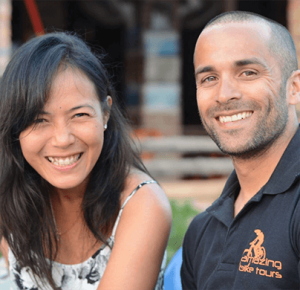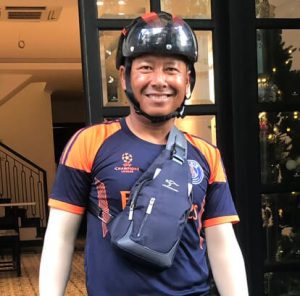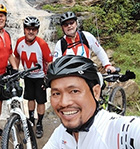Cambodia – Getting to know Siem Reap
Gateway to the world famous Angkor temples, Siem Reap was once a small backwater town, but during the past two decades it has changed beyond all recognition and is now one of Asia’s major tourist hubs, home to international hotels, an exciting variety of restaurants and – would you believe – three PGA-rated golf courses.
Cambodia Siem Reap Travel Guide
Despite Siem Reap’s rapid growth, the Old Quarter has retained many of its Colonial-style buildings, and a safe and friendly vibe exists. Step away from the town and you’ll find that the life of the surrounding rural communities is unaffected by modernity. Additionally, there has been a revival of traditional arts and crafts, with a growing number of workshops, galleries and co-operatives springing up in the region.
The main draw is, naturally, the vast Angkor Wat temple complex, which has been designated a UNESCO World Heritage Site. However, Siem Reap is no one-trick-pony, and has more to offer than just a day or two exploring Angkor Wat. It’s fast becoming a popular destination for light-adventure, with opportunities for camping beside outlying temples, kayaking on the Tonle Sap, taking a microlite flight over the temples, or cycling through Khmer villages.
The town also boasts a bustling nightlife with stylish bars and an impressive variety of eateries offering everything from street food to fine dining.
What to do in Siem Reap
Right in the heart of town, the Old Market (Psar Chas) may not be quite as genuine as it once was, but an early morning visit to the food stalls in the middle of the market is not to be missed. Fresh meat and seafood stalls are crammed in next to exotic fruit, dried spices, and unidentifiable buckets of insect snacks – the place has an incredible buzz and many competing smells!
Established by former child soldier Mr Aki, the Cambodia Landmine Museum is home to an extensive collection of mines, mortars and weapons that were used during the civil war, alongside informative displays on the global impact of landmines. It’s an eye-opening experience, and offers an insight into Cambodia’s ongoing legacy of thousands of unexploded mines spread across the country, especially in rural regions.
Around Siem Reap
There are around 360 floating villages on the mighty Tonlé Sap Lake, several of which can be visited on a day trip from Siem Reap. Travel by local boat past houses, schools, shops and temples built on towering stilts to allow for the dramatic change in water level over the year.
An easy day trip from Siem Reap, Prek Toal is a UNESCO-protected area of Tonlé Sap which safeguards a wealth of birdlife. It’s very much a highlight even if you’re not a regular birdspotter. Best visited between Nov-Jan.
Another Tonlé Sap highlight is the flooded forest at Kampong Phluk where, when water levels are high (Aug-Feb), only the tree tops can be seen.
An hour from Siem Reap is the sacred mountain of Phnom Kulen, understood to be the birthplace of the Khmer Empire. Aside from impressive views from the top and light trekking trails, its key attractions are the River of 1,000 Lingas, which has Angkorian carvings etched into the riverbed, and dramatic waterfalls that are a popular spot with locals at the weekends.
Two hours’ drive away, the 10th century capital of Koh Ker was densely packed with over 200 temples and shrines, which have been largely overgrown by the surrounding forest. To really appreciate the complex, we can arrange a night of camping amongst the ruins, allowing you to explore the temples by torchlight.
Phnom Kulen
If you want to extend your stay in Siem Reap without risking getting ‘templed-out’, a trek up the nearby Phnom Kulen (or Kulen Mountain) could be just the ticket. The day can be as demanding or laid back as you choose, from a gentle wander to a full day’s trekking, covering anything up to 12 miles of undulating terrain.
You can stop at places of interest such as Preak Ang Chup, the grand buddha statue at Preah Ang Thom, and the ‘River of 1000 Lingas’ with its nearby holy waterfalls – a very refreshing break after a morning’s hard walking. The day can easily be adjusted for those wanting to walk shorter distances or not walk at all. It’s even possible to camp near the waterfalls, and enjoy one of the finest sunrises Cambodia has to offer.
Siem Reap is of course the base for exploring the iconic temples of Angkor Wat. Cycling is a great way to traverse the area and, thanks to the flat terrain, the going is easy. For those with a head for heights, a microlight flight over the temple sites is a truly memorable experience that gives you a sense of the scale of the temple area, and offers fantastic photo opportunities.
Speak to someone who's been there
Cambodia ⟩ Tonlé Sap Lake
Cambodia ⟩ Ratanakiri
Cambodia ⟩ Angkor Temples
Cambodia ⟩ Takeo
Cambodia ⟩ Stung Treng
Cambodia ⟩ Sihanoukville
Cambodia ⟩ Siem Reap
Cambodia ⟩ Sen Monorom
Cambodia ⟩ Preah Vihear
Cambodia ⟩ Kratie




